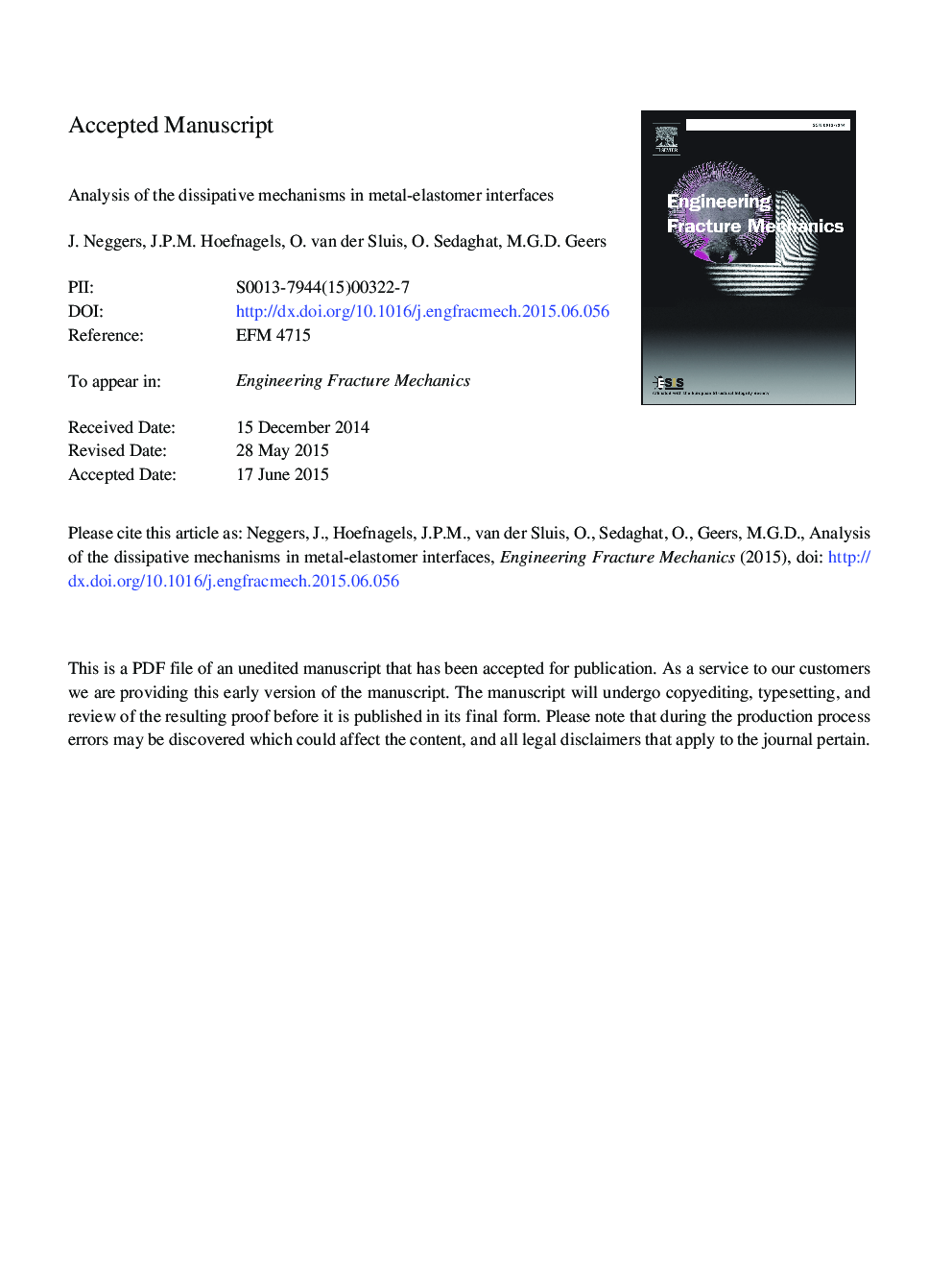| Article ID | Journal | Published Year | Pages | File Type |
|---|---|---|---|---|
| 7169696 | Engineering Fracture Mechanics | 2015 | 40 Pages |
Abstract
Remarkable toughnesses have been reported for metal-elastomer interfaces in stretchable electronics and attributed to surface roughness-induced fibrillation. Interestingly, this micro-mechanism was also observed for PDMS, known for its hyperelastic and thus non-dissipative material behavior. Here, the energy dissipation origin is elucidated by a thorough multi-scale experimental analysis of PDMS-copper delamination, for two distinct mode-mixities and surface roughnesses. The fracture process zone was observed by in situ and post-mortem optical and electron microscopy, and compared to cohesive-zone finite elements simulations: The PDMS deformation is indeed (predominantly) reversible and most energy is dissipated by release of elastically stored energy upon fibril fracture.
Related Topics
Physical Sciences and Engineering
Engineering
Mechanical Engineering
Authors
J. Neggers, J.P.M. Hoefnagels, O. van der Sluis, O. Sedaghat, M.G.D. Geers,
